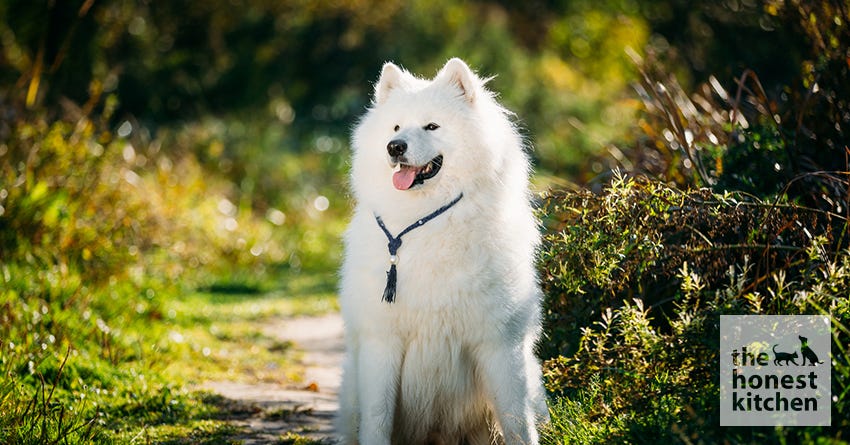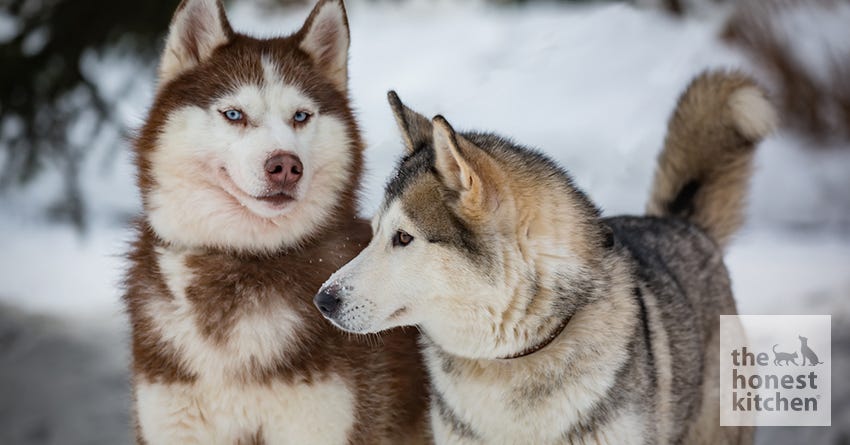As striking as they are, dogs that were bred for the arctic aren’t for everybody
It’s important to know what you’re getting into before you bring that fluffy pup into your home.
Origins
Arctic breeds hail from the Northern latitudes; think Siberian Huskies, Alaskan Malamutes, American Eskimo Dogs, Chow Chows, Akitas, Karelian Bear Dogs, Norwegian Elkhounds, and Samoyeds, and all mutts whose bloodlines contain more than a small percentage of any of these breeds. These well-built dogs are genetically some of the oldest modern canines, meaning they’re evolutionarily slightly closer to wolves and coyotes than other contemporary domesticated pets. Arctic breeds often have thick fur coats to protect them from subzero temperatures, sturdy paws to withstand ice and snow, and the kind of muscular physique bred for hard work.

©istockphoto/Ryhor Bruyeu
Coat
Because they were bred to flourish in cold weather, Arctic breeds have a lot of fur. Take the Alaskan Malamute, for example: “ a great cold weather breed because of its origin—they come from Alaska and are the oldest and largest of the arctic sled dogs, having been used for freighting," says Gina DiNardo, vice president of the American Kennel Club. "They have a thick, coarse coat that keeps them warm."
Those thick coats are great for skijoring and holiday photos, of course. But no matter how cute they are as pups, adult arctic breeds are guaranteed to shed—a lot. If you bring one of these dogs into your home, be prepared to see fur on everything you own.
Climate
Arctic breeds were bred for, well, the arctic. Because of their thick fur and other adaptations, they often have a hard time in hot, humid weather. If you live in a warm climate, you’ll need to make sure that your fluffy pooch has access to lots of fresh water, shade, and air-conditioning whenever possible. Maintaining a healthy body temperature is vitally important for your dog’s overall health, and remember: these animals were bred to survive on glaciers, not sidewalks.

©istockphoto/Vikulin
Purpose
Because they were bred to pull sleds, haul loads, and travel for long distances across ice and snow, arctic breeds do best with exercise, daily stimulation, and firm, consistent leadership. While they’re friendly companions when properly cared for, if they don’t get enough activity these four-legged athletes will often cause trouble, run away, or “talk back” to their owners. Be prepared for daily walks or runs, lots of training and positive reinforcement, and the absolute necessity of a fenced-in yard.
Pack Mentality
Arctic breeds are pack-oriented dogs, meaning they’ll do anything to feel like part of the family. They’re usually great with kids, though because of their size they should be watched carefully around young children. If you have the time and energy, these animals are loving, affectionate, faithful companions—just be sure that you don’t bite off more than you’re ready to chew.

©istockphoto/alkir

 ©istockphoto/Ryhor Bruyeu
©istockphoto/Ryhor Bruyeu ©istockphoto/Vikulin
©istockphoto/Vikulin ©istockphoto/alkir
©istockphoto/alkir

